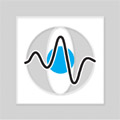
Dr.-Ing. Jingfeng Han
Alumnus of the Pattern Recognition Lab of the Friedrich-Alexander-Universität Erlangen-Nürnberg

3D Visualization of 2D Microscope Images
Three dimensional visualizations of two dimensional microscope slices becomes more and more important for the various study in the clinic. With help of advanced 3D visualization techniques, medical researchers can clearly observe the morphological changes of interested tiny structures, like follicles and optical nerves, to better understand the their mechanisms. The purpose of this work is to develop a software tool that can convert a sequence of microscope slices to a three dimensional volume. This software need to implement at least the following four functions. Rigid registration: to estimate the optimal translation and rotation to match the adjacent slices. Intensity correction: to compensate the intensity biases of adjacent slices, which are caused by the inconsistent staining. Slice interpolation: to estimate the defect slices using neighboring slices. ROI segmentation: to segment the important structures for better visualization and quantitative measurement.
Cooperations:  Anatomy Institute II, FAU
Anatomy Institute II, FAU
Software:

Validation of Hybrid SPECT/CT Scanners
Hybrid scanners, which enable the performance of single photon emission tomography (SPECT) and X-ray computerized tomography (CT) in one procedure, have considerable potential as an all-rounder in the nuclear medicine departments. However, challenges remain in validating the accuracy of such hybrid systems. In this work, a systematic validation method with minimum user interaction is proposed, which has been successfully used on a data-set from a SPECT/Spiral-CT hybrid camera. This method focuses on measuring the distance between the centers of gravity of the SPECT hot spot and its counterpart in the CT image. A novel adaptive threshold method is proposed to automatically segment SPECT hot spots, while the corresponding CT structures are segmented by the semi-automatic random walk method, based on a fast multigrid solver. Accuracy and reproducibility of the validation method have been confirmed by experiments with 21 clinical data-sets.
Cooperation:  Clinic of Nuclear Medicine, FAU
Clinic of Nuclear Medicine, FAU
Animation:  Validation Workflow(avi 5M)
Validation Workflow(avi 5M)
Paper:  Computed-Aided Evaluation of Anatomical Accuracy of Image Fusion between X-ray CT and SPECT(pdf 6M)
Computed-Aided Evaluation of Anatomical Accuracy of Image Fusion between X-ray CT and SPECT(pdf 6M)
(Submitted to Computerized Medical Imaging and Graphic)

Joint edge detection and edge matching
This work presents a new algorithm based on the Mumford--Shah model for simultaneously detecting the contour features of two images and jointly estimating a consistent set of transformations to match them. Compared the current asymmetric methods in the literature, this fully symmetric method allows one to determine one-to-one correspondences between the contour features of two images. The entire variational model is realized in a multi-scale framework of the finite element approximation. The optimization process is guided by an EM type algorithm and an adaptive generalized gradient flow to guarantee a fast and smooth relaxation. The algorithm is tested on T1 and T2 magnetic resonance image (MRI) data to study the parameter setting. We also present promising results of three applications of the proposed algorithm: inter-object mono-modal registration, retinal image registration and matching digital photographs of neurosurgery with its volume data.
Cooperation:  Institute for Numerical Simulation, University of Bonn
Institute for Numerical Simulation, University of Bonn
Paper:  Mumford-Shah Model for One-to-one Edge Matching (pdf, 4MB)
Mumford-Shah Model for One-to-one Edge Matching (pdf, 4MB)
(IEEE Transcation on Image Processing, Nov 2007, to appear)

Automatical registration of patial volume data
Registration of an individual's image data set to an anatomical atlas provides valuable information to the physician. In many cases, the individual image data sets are partial data, which may be mapped to one part or one organ of the entire atlas data. Most of the existing intensity based image registration approaches are designed to align images of the entire view. When they are applied to the registration with partial data, a manual pre--registration is usually required. This work presents a fully automatic approach to the registration of the incomplete image data to an anatomical atlas. The spatial transformations are modelled as any parametric functions. The proposed method is built upon a random search mechanism, which allows to find the optimal transformation randomly and globally even when the initialization is not ideal. It works more reliably than the existing methods for the partial data registration because it successfully overcomes the local optimum problem.
Cooperation:  Clinic of Nuclear Medicine, FAU
Clinic of Nuclear Medicine, FAU
Poster:  Automatic Sub-Volume Registration (pdf 0.4MB, SPIE 2006)
Automatic Sub-Volume Registration (pdf 0.4MB, SPIE 2006)
Updated 03.10.2007




